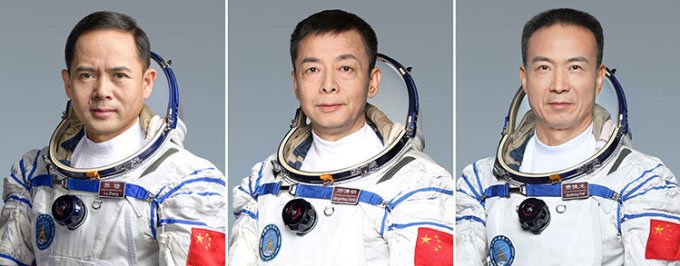Three astronauts of Shenzhou 15 have been thoroughly trained and prepared for the challenging missions aboard China’s space station.

The Long March 2F rocket and Shenzhou 15 spacecraft en route to the launch site in Jiuquan. (Photo: CMS)
The mission with the Shenzhou 15 crew marks the final step in the construction of the Tiangong space station. According to the plan, the spacecraft carrying three astronauts—Fei Junlong, Deng Qingming, and Zhang Lu—will be launched by the Long March 2F rocket at 23:08 on November 29, Beijing time, which is 22:08 tonight in Hanoi.
During the mission, the three astronauts will be tasked for the first time with using the Mengtian laboratory module to transfer equipment and install devices outside the cabin. Unlike the previous Shenzhou 13 and 14 missions, the Shenzhou 15 crew will conduct a series of outdoor activities.
“Speaking about the outdoor activities, previously we only climbed up one cabin, but this time we have to climb up three cabins. I measured the distance, and it’s over 150 meters round trip,” said Fei, commander of Shenzhou 15.
The astronauts prepare for the Shenzhou 15 mission. (Video: CCTV+)
All missions are challenging, and to be ready for that, all three astronauts have undergone intensive training.
“My longest underwater training session lasted 6 hours. That is the time limit for an astronaut’s underwater training. It requires a strong mentality, good physical energy reserves, and a strong will to complete this mission,” Deng emphasized.
In addition to outdoor activities, the three astronauts must also complete a large number of experiments during the mission. According to Zhang, there are a total of 24 experimental cabinets inside the Tiangong space station, where they will conduct over 100 experiments. To ensure everything goes perfectly, the three astronauts must coordinate closely.

Zhang Lu, Deng Qingming, and Fei Junlong (left to right). (Photo: Xinhua)
“Our experiments are both numerous and complex. If we want to remove a panel, we have to unscrew over 100 screws and prevent those screws from floating away. This requires us to be careful and work closely together. We must always observe and remind each other. In space, these operations are very dangerous and could lead to irreversible damage. Therefore, there always needs to be more than two people involved in each experiment. This means we will not allow any astronaut to conduct a particular experiment or operate a device alone. This is a consensus among the three of us,” Zhang added.
The Shenzhou 15 crew is scheduled to spend 6 months in orbit to complete experiments and maintain the Tiangong space station.


















































